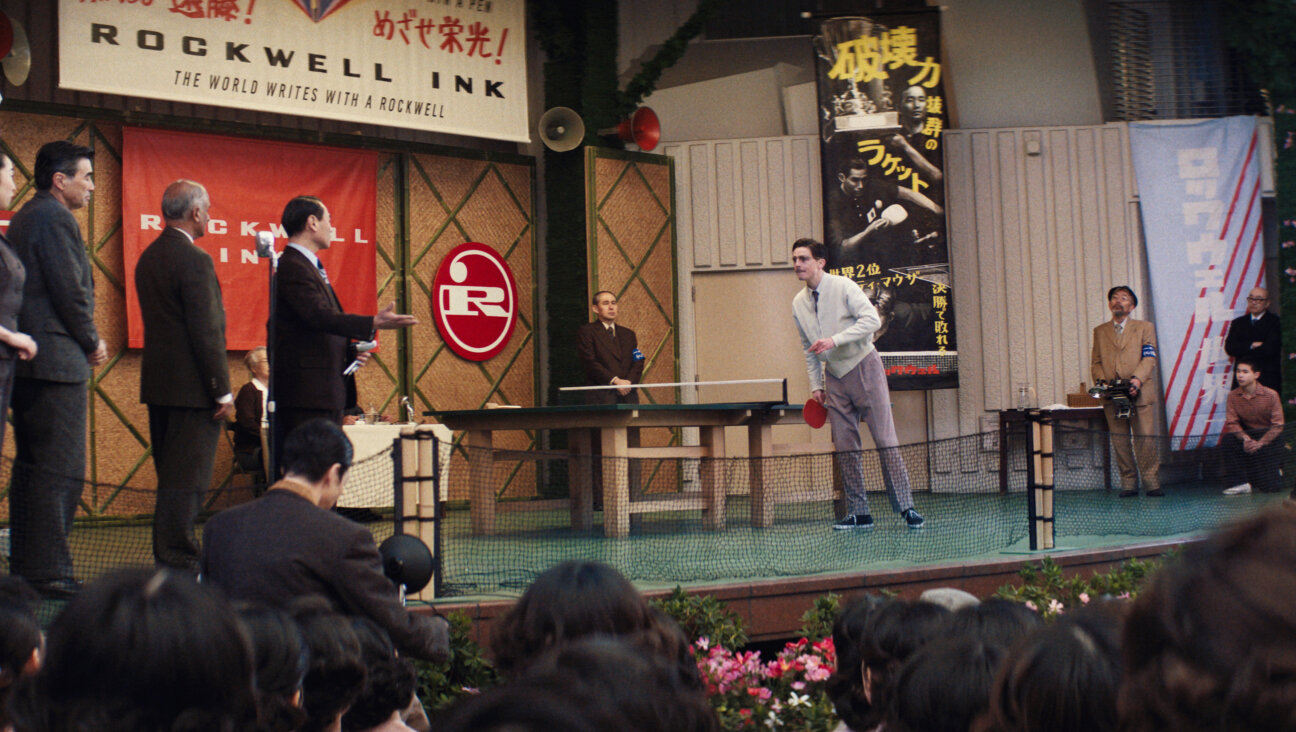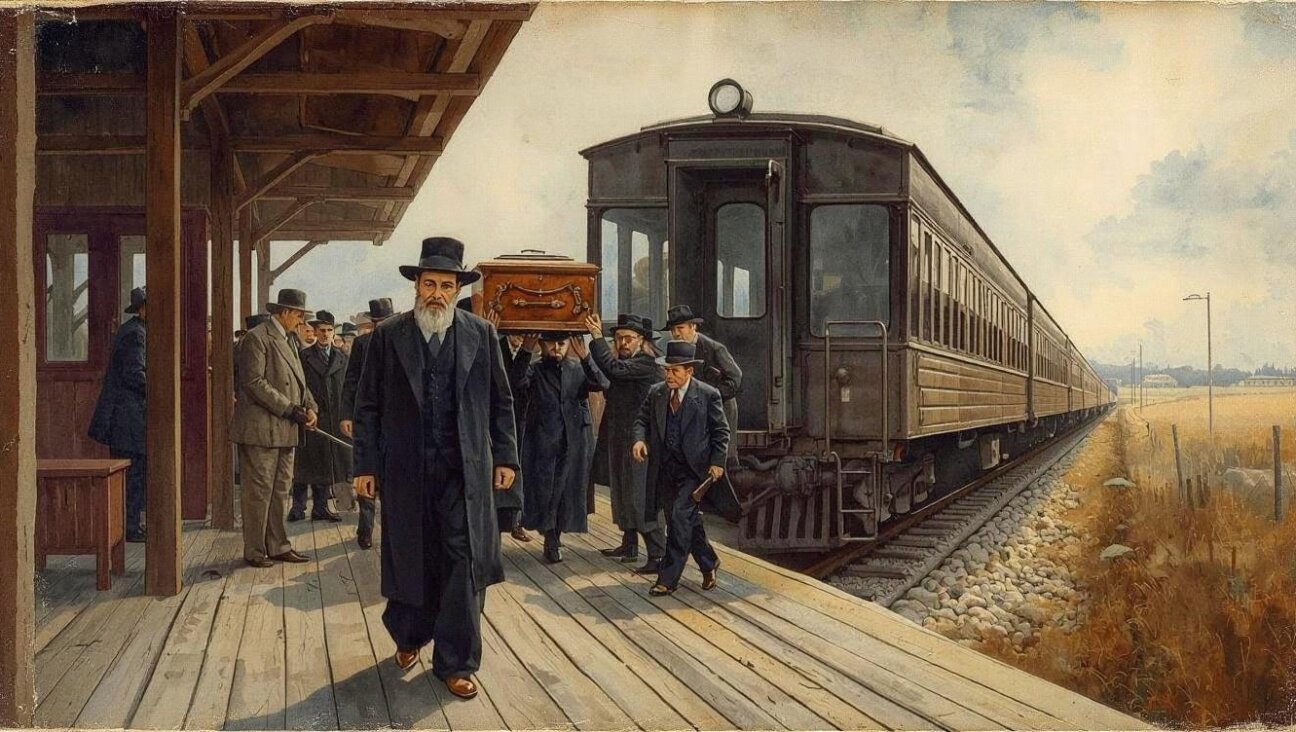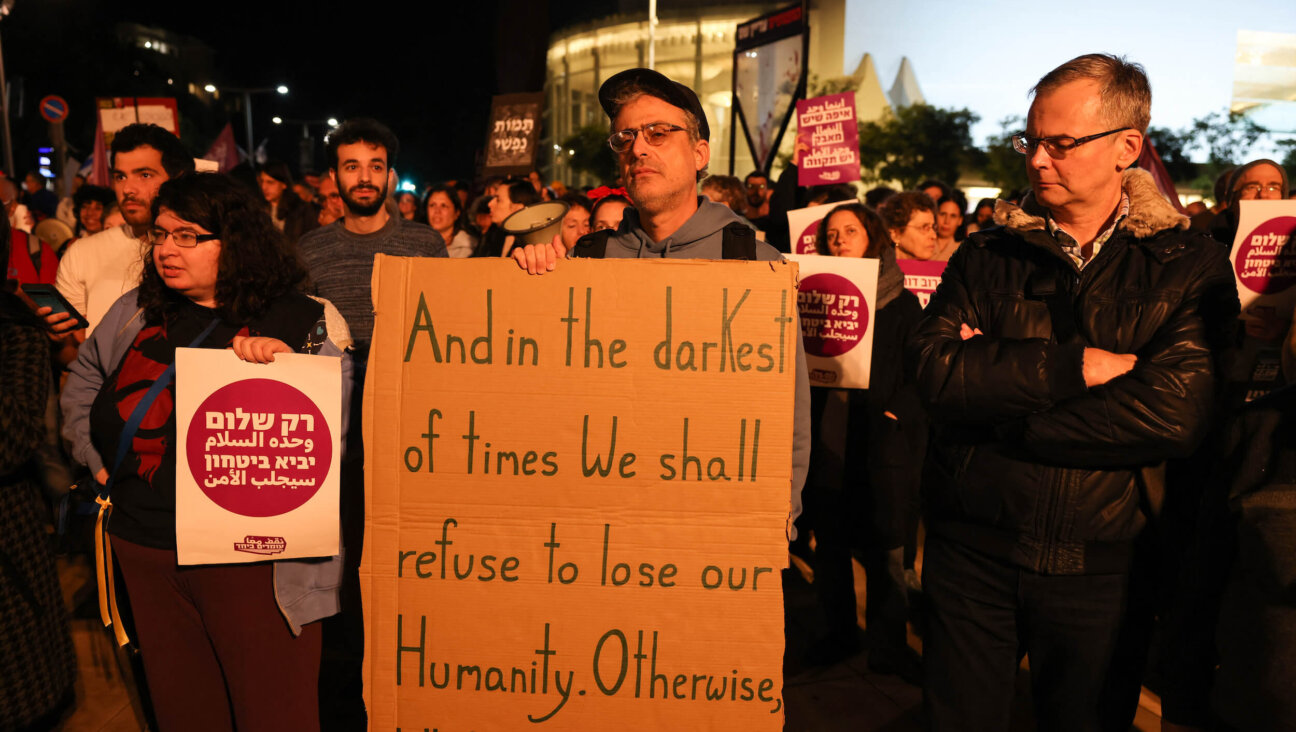100 years collecting Jewish history, 24 million artifacts and only 3 rooms to fit it in
3 exhibits at the YIVO Institute for Jewish Research highlight what was lost, and what was miraculously saved
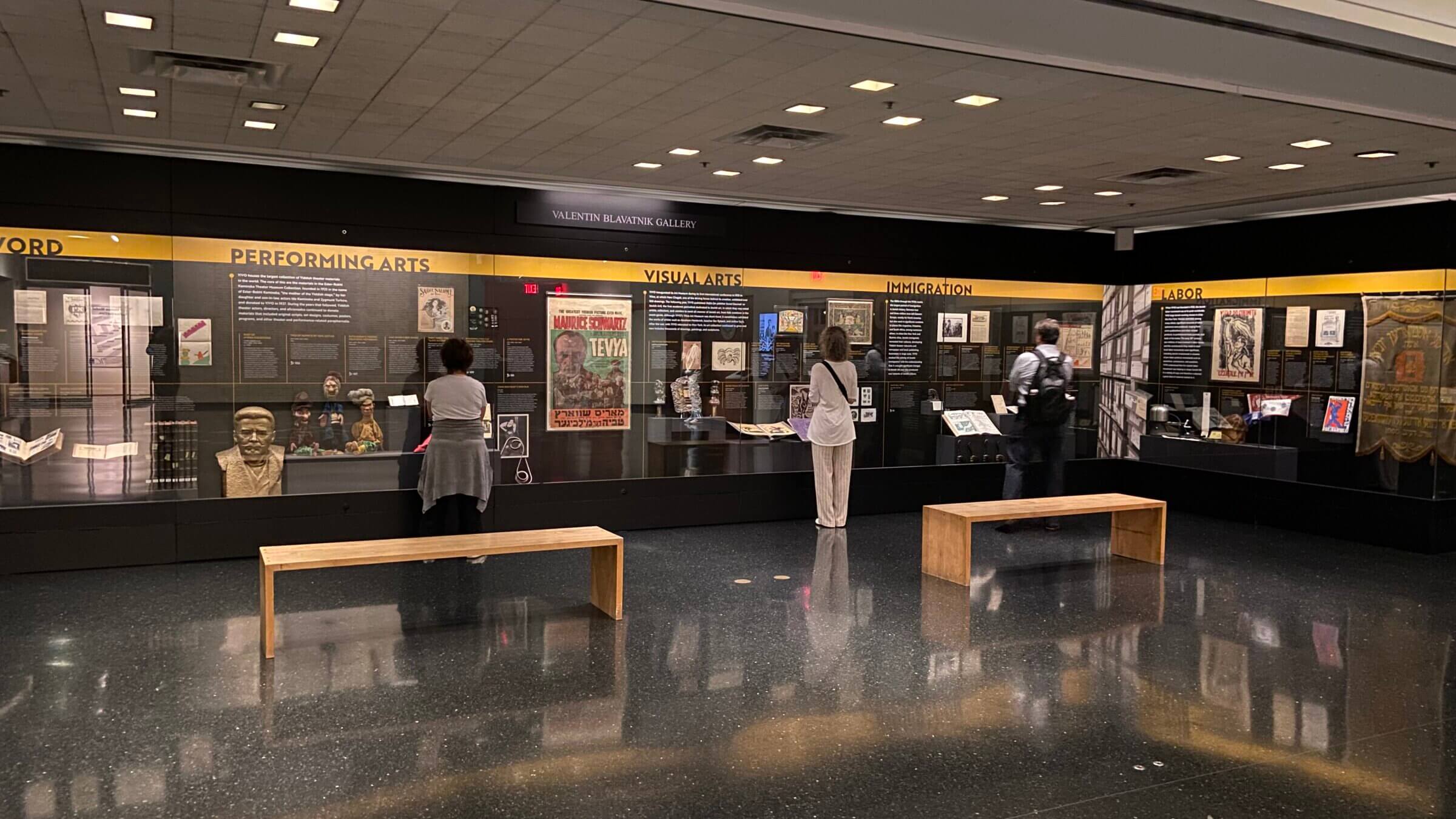
Visitors view Hail to the Zamlers!, a potpourri of items from YIVO’s archive. Courtesy of YIVO Institute for Jewish Resarch
A twisted piece of iron tells the story of a Polish man who was once among the most popular Jews in Europe.
Zishe Breitbart, born in Łódź to a family of blacksmiths, joined a travelling circus and developed a strongman act. He bent iron with his bare hands, lay on beds of nails, broke chains with his teeth and, years before Charles Atlas, published his personal fitness regimen. The entertainer’s life was cut short following a 1925 homecoming visit to Poland, when he died of blood poisoning after accidentally stabbing himself in the knee with a spike he punched through a wooden board with his fist.
In the YIVO Institute for Jewish Research’s centennial exhibition, the loop of mangled metal from Breitbart’s act shares wallspace with a poster-sized pamphlet advertising the achievements of the Zionist community in pre-state Palestine, which, in one corner, contrasts the trembling Jew of the Diaspora with a strapping halutz, or pioneer. Whoever thought to represent the Old World Jew as weak apparently forgot about Breitbart, aka the Strongest Man in the World.
Eddy Portnoy, director of exhibitions at YIVO, had the difficult task of encapsulating the organization’s dramatic century, distilling it into three galleries and selecting just a sampling from over 24 million artifacts.
The first exhibit, Hail to the Zamlers, in the main hall of the Center for Jewish History, is an ode to the largely amateur collectors who made YIVO possible, and showcases the breadth of the institute’s holdings.
Three puppets, from the Yiddish puppet troupe Modicut, hang near a rare early paper copy of the Forverts (libraries, believing microfilm to be the future, Portnoy said, pulped many of their print editions). Banners from the International Ladies’ Garment Workers’ Union are on display with homework from children from the Yiddish school system in Vilna (modern-day Vilnius, Lithuania) dated to the 1930s, just a few short years before the children were likely murdered in the Shoah.
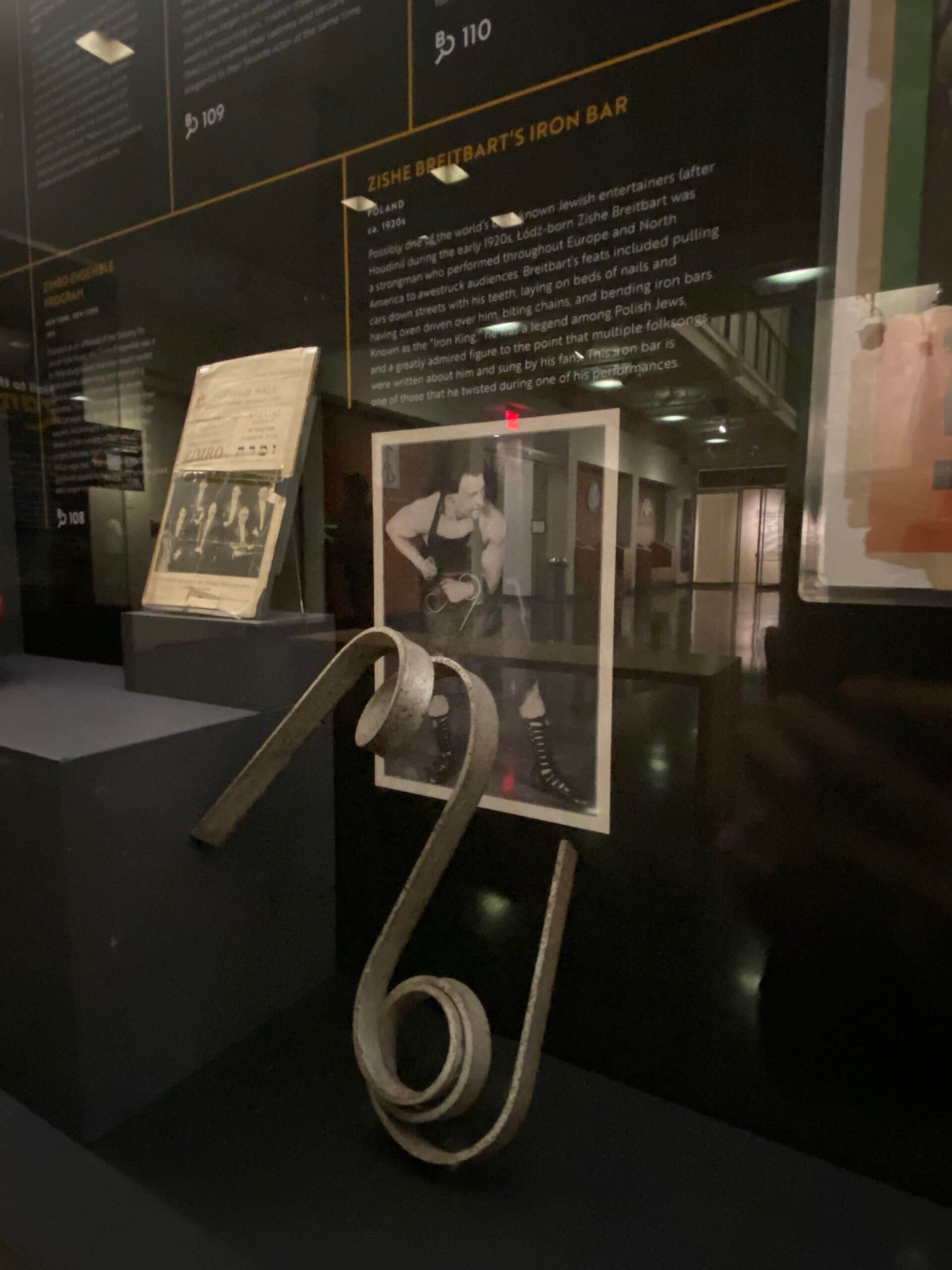
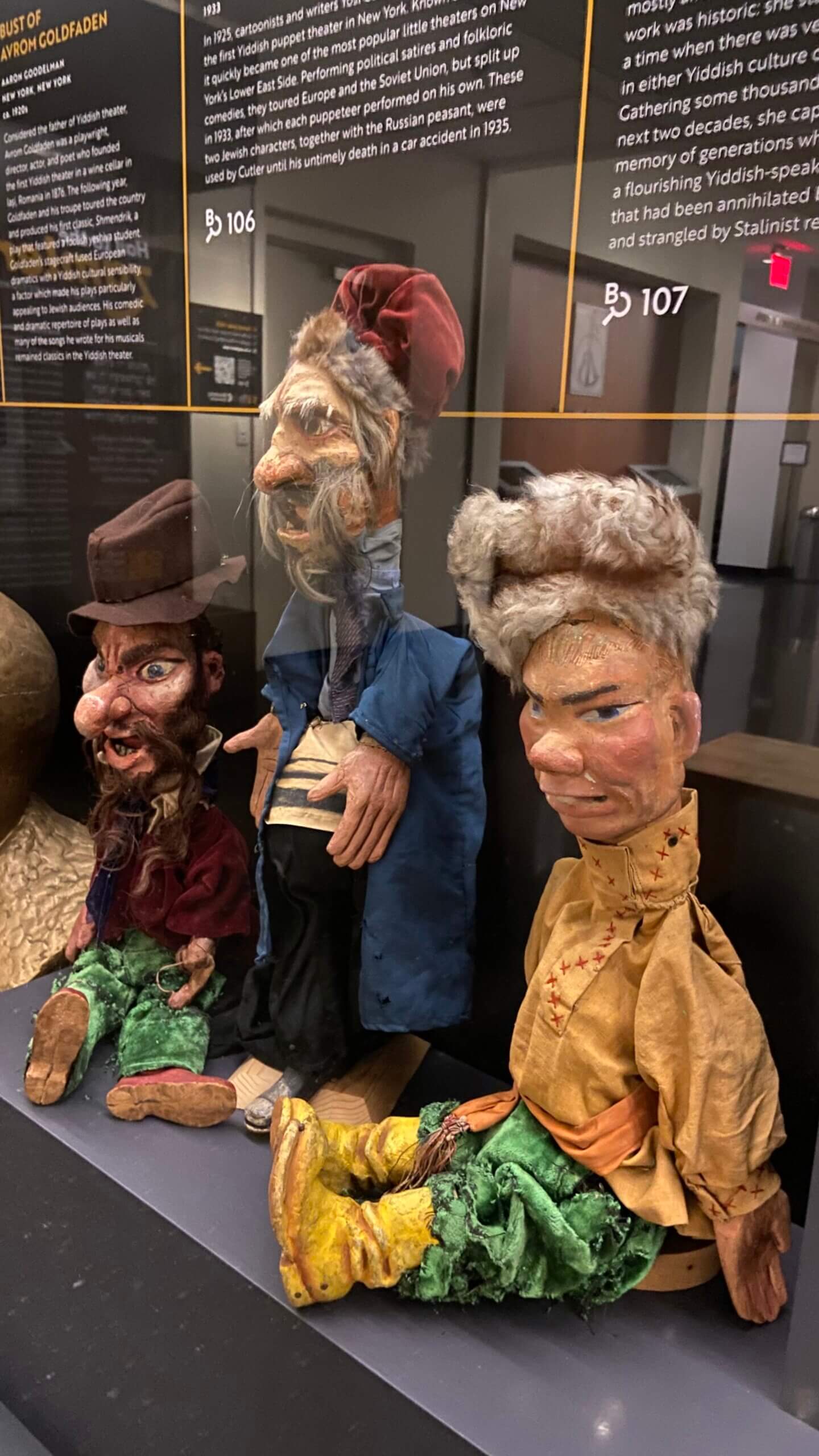
These objects tell the larger story of Jewish entertainment, immigration, labor and religion. Portnoy was guided by the thematic significance, but also novelty — the things YIVO rarely gets a chance to show the public.
YIVO’s story, which began in 1925 in Vilna as a means to lend scholarly legitimacy to the Yiddish language and Jewish people of Eastern Europe, took a more existential turn in World War II, by which time YIVO’s headquarters had relocated to New York, with most of its materials remaining behind.
With the Nazi occupation of Vilna, a group called the Paper Brigade was forced into slave labor at the old YIVO headquarters where the peacetime work of cataloging the stuff of Jewish life was warped to a genocidal end: they were now tasked with sorting objects for a planned Institute for Research on the Jewish Question in Frankfurt, devised to study Jewish life after its extermination. Risking, and sometimes even forfeiting, their lives, the Paper Brigade smuggled what they could into the Vilna Ghetto.
Portnoy curated the second exhibit, The Paper Brigade: Smuggling Jewish Treasures in Nazi-Occupied Vilna, around their efforts. Among the objects they took were religious texts dating from 16th-century Venice, Theodore Herzl’s diary and, with an awareness that they were living through history under occupation, papers with arrest orders and even the decorated armband of Jacob Gens, head of the Vilna Judenrat.
Among the most significant artifacts the Paper Brigade salvaged are pinkesim, communal record books, functionally logs of entire murdered communities. Chief among them is the pinkes for the synagogue of the Vilna Gaon, the legendary 18th-century religious leader. Poet Avrom Sutzkever, who co-led the Brigade and recovered its work after the war, regularly mailed material to YIVO in New York, but he insisted the pinkes of the Gaon’s kloyz, or house of study, be hand-delivered.
“He wouldn’t let it out of his hands,” Portnoy said. “This represents the whole essence of Jewish Vilna.”
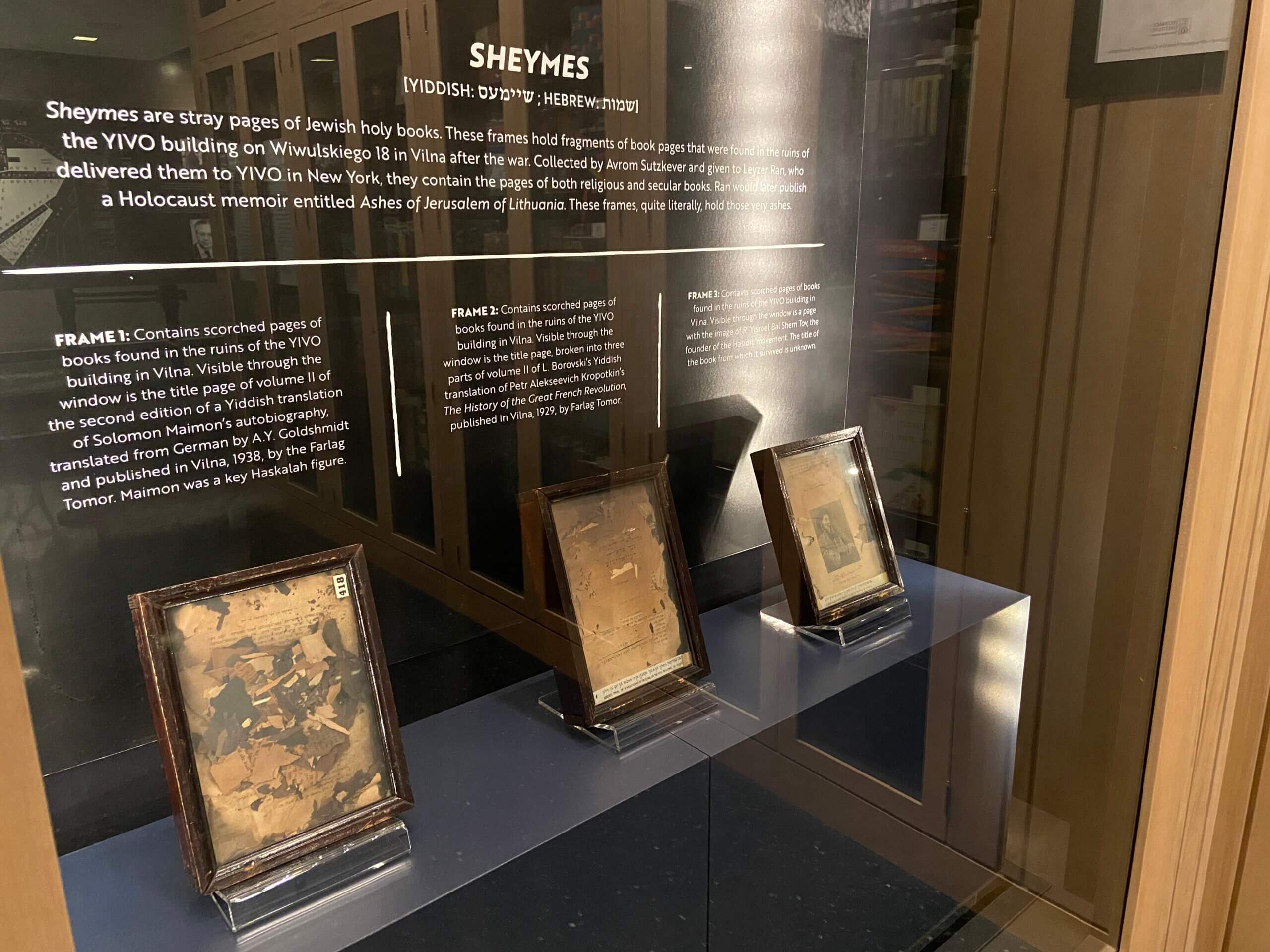
In a place of honor in the Paper Brigade exhibit are burnt fragments of paper that Sutzkever dug out of the rubble of the YIVO Building in 1946. Throughout the 1940s and ’50s, they were on display at YIVO’s headquarters in New York.
“These were people who risked their lives for Jewish cultural patrimony,” said Portnoy.
“This was all incredibly valuable, whether it was the pinkes of the Gaon’s kloyz or the ashes that were left over.”
The value of these artifacts, as history, is hard to overstate. By the rare book room and reading room, a final exhibition, The Strashun Library: Rare Books Rescued from the Ashes of Vilna, highlights an extensive collection with treasures that date back centuries.

It’s through the work of the Paper Brigade that these thousands of volumes ended up at YIVO. In the late 19th century, Matisyahu Strashun, a prolific bibliophile, bequeathed his collection to the Vilna Jewish community with the condition that it establish a public library. They opened one to the public 1902, and, Portnoy says, it was such a popular destination that there would often be lines out the door. Sometimes, it was so crowded visitors had to share stools.
As was the case with most everything Jewish in Vilna, the Nazis had designs on the Strashun Library for their Institute in Frankfurt. The Einsatzstab Reichsleiter Rosenberg, dedicated to looting cultural materials in occupied lands, plundered the library, destroyed the building, and sent many of its rare books to be sorted at YIVO.
Among the items the Brigade saved are books with woodcut illustrations dating to the early 17th century and a 1525-1526 edition of the Sefer Kol Bo, containing glosses on Jewish daily ritual. Portnoy’s favorite part of this exhibition isn’t a book at all, but a humbler artifact that signals a lost way of life: a bill from the kehilla for chopped wood for the library.
“It’s such a pedestrian thing,” Portnoy said, “but the fact that they got saved is pretty amazing.”
More information about the exhibits can be found on YIVO’s website.

